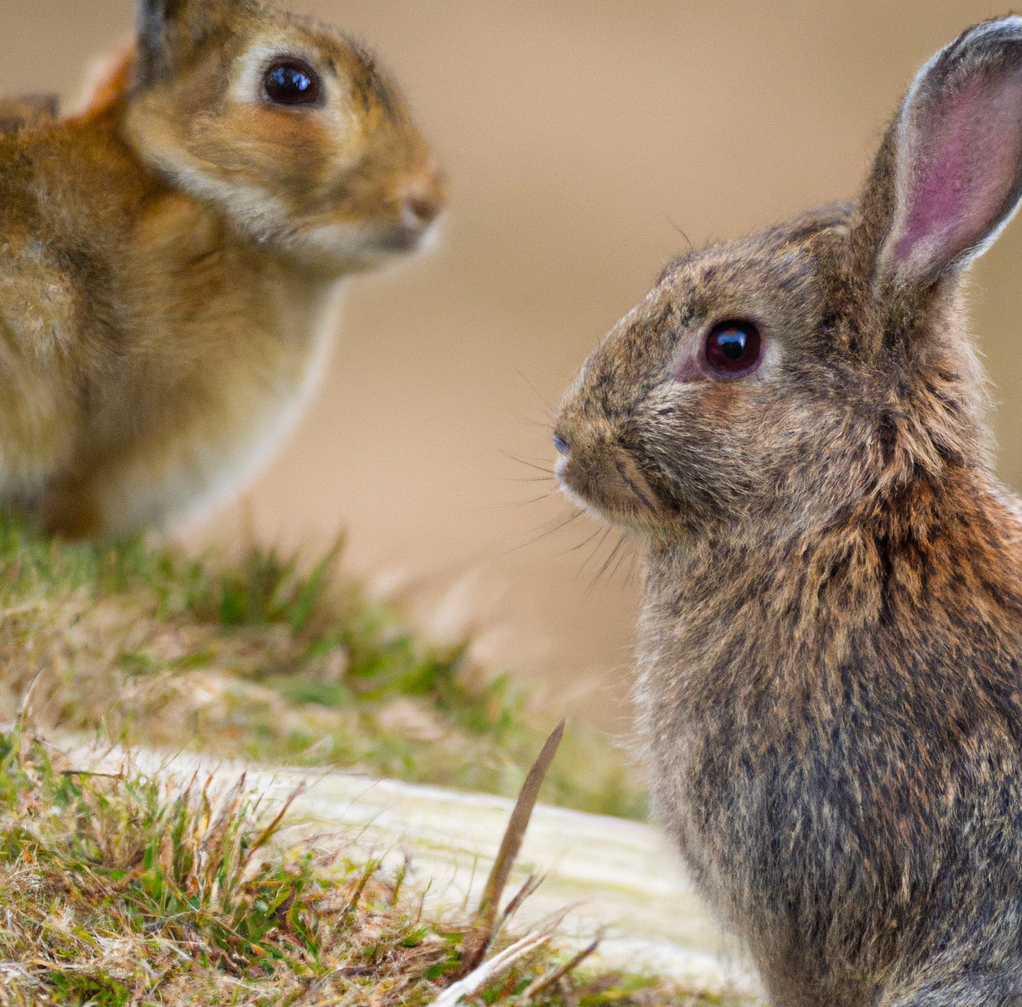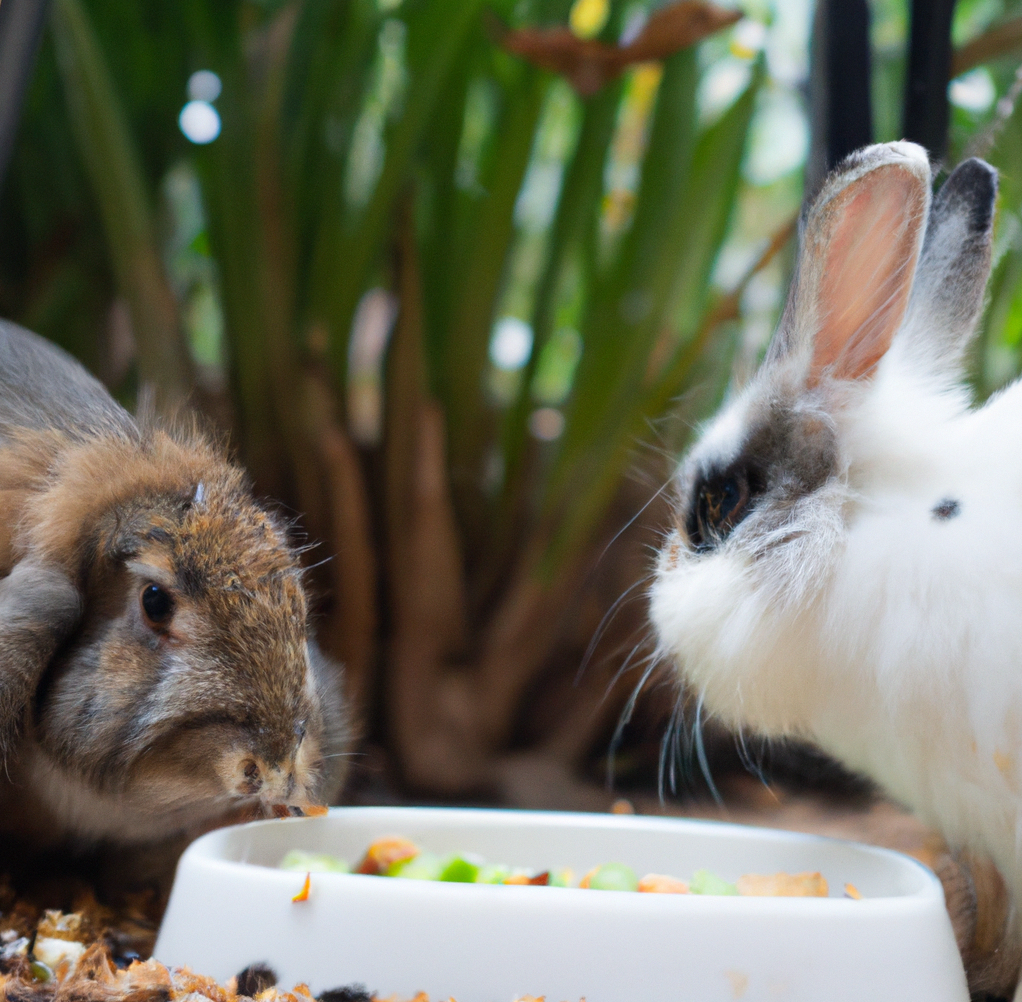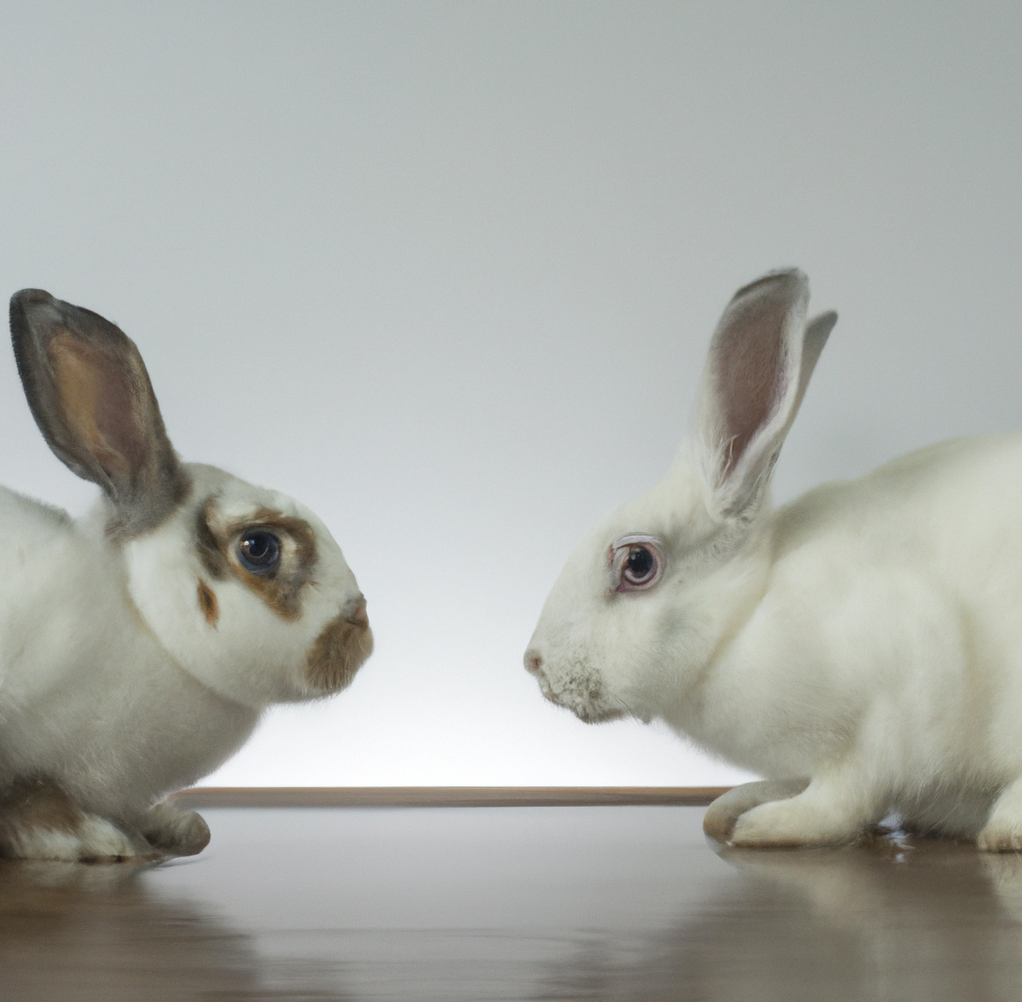Rabbits are typically seen as gentle and docile animals, but they can occasionally display aggressive behavior. In some cases, rabbits can even attack each other. It is important for rabbit owners to understand why rabbits attack each other so that they can take steps to prevent this behavior in their own pets. In this article, we will explore some of the common causes of rabbit-on-rabbit aggression, as well as tips for preventing it.
What Biological and Behavioral Factors Lead Rabbits to Attack Each Other?
Rabbits are social animals, and when in close proximity, they will often show aggression towards one another. The most common cause of aggression between rabbits is territorial behavior. Rabbits are naturally very territorial and will fight for the right to mark their territory. This can be seen in a number of ways, from chasing and mounting one another, to vocalizing, or even physical violence.
Hormones also play a role in rabbit aggression. During periods of sexual maturity, rabbits will become more aggressive as they are driven by hormones. This is especially true for male rabbits, as they will compete with one another to mate with female rabbits.
Finally, environment can play a role in rabbit aggression. If a rabbit senses a threat to its territory, it may attack another rabbit to protect it. This is especially true if the rabbit feels that its territory is being threatened by a new rabbit. Rabbits may also attack one another if they are overcrowded and lack sufficient resources, such as food and water.
In all cases, rabbits will display aggression as a means of establishing dominance over their environment. By understanding the biological and behavioral factors that lead to rabbit aggression, we can take steps to reduce the risk of violence between rabbits in our care.
The Different Types of Aggression in Rabbits and How to Handle Them
Rabbits are often seen as gentle, sweet animals and that is usually the case. However, rabbits are also capable of expressing aggression towards humans and other animals. It is important to understand the different types of aggression in rabbits in order to successfully handle them.
The most common type of aggression in rabbits is known as territorial aggression. This is when a rabbit feels threatened by another animal or person and attempts to defend its territory. This can manifest in the form of lunging, biting, growling, and thumping. In order to handle territorial aggression, it is important to give the rabbit its own space to call its own and to respect its boundaries. If the rabbit is feeling particularly threatened, it can help to provide a safe place for the rabbit to retreat to in order to feel secure.
Another type of aggression in rabbits is known as redirected aggression. This occurs when a rabbit is feeling threatened by another animal or person, but is unable to retaliate directly against the source of the threat. Instead, it takes out its aggression on the nearest animal or person, which can result in biting or scratching. In order to handle redirected aggression, it is important to remove the source of the threat and provide the rabbit with a safe place to retreat.
The final type of aggression in rabbits is known as inter-rabbit aggression. This is when two rabbits express aggression towards each other in the form of biting and chasing. This type of aggression is usually seen when two rabbits are competing for dominance or resources. In order to handle inter-rabbit aggression, it is important to separate the two rabbits and provide them with their own resources and territories.
In conclusion, rabbits are capable of expressing aggression towards humans and other animals. It is important to understand the different types of aggression in rabbits in order to successfully handle them. Territorial aggression is the most common type of aggression in rabbits and can be handled by giving the rabbit its own space and respecting its boundaries. Redirected aggression occurs when a rabbit is feeling threatened and unable to retaliate directly, and can be handled by removing the source of the threat and providing a safe place for the rabbit to retreat. Lastly, inter-rabbit aggression is when two rabbits express aggression towards each other and can be handled by separating the two rabbits and providing them with their own resources and territories.
Understanding Rabbit Territorial Behavior and Why Rabbits Attack Each Other

Rabbit territorial behavior is a complex topic that requires understanding of the animal’s social structure and living environment. In the wild, rabbits are very territorial and aggressive animals that usually live in small groups and defend their own turf. When two rabbits come into contact, they will often fight to establish dominance.
Rabbits attack each other for a variety of reasons. These include establishing dominance, protecting resources, such as food and nesting sites, and defending against predators. When two rabbits meet, they usually start by sniffing each other and displaying aggressive body language, such as standing tall and erect, flicking their ears and thumping their feet. If one rabbit is deemed as dominant, the other will usually back down and retreat. If not, then a physical altercation may ensue.
Rabbits are also known to attack each other when they feel threatened or stressed. This is especially true for overcrowded or confined areas where resources are limited. In such situations, rabbits may become aggressive and start to fight over resources.
Rabbit territorial behavior can also be triggered by competition for mates. During mating season, male rabbits will often fight with each other in order to win a female’s favor. This behavior is usually exhibited by male rabbits that are larger and more dominant.
It is important to understand that rabbit territorial behavior is a natural part of the animal’s social structure. If rabbits are kept in a safe and comfortable environment with enough space and resources, they are less likely to become aggressive and fight with each other.
How to Recognize Signs of Aggression in Rabbits and Prevent Them from Attacking Each Other
Recognizing signs of aggression in rabbits is important for preventing them from attacking each other. Rabbits may exhibit several behaviors when feeling threatened or aggressive. These behaviors can include: thumping with their hind legs, growling or honking, nipping, chasing, mounting, circling, and boxing. Thumping with their hind legs is often a sign of warning or a way to express displeasure. Growling or honking is a sound they can make when they feel threatened. Nipping is when a rabbit bites another rabbit. Chasing is when a rabbit follows another around, trying to intimidate them. Mounting is when a rabbit climbs onto the back of another rabbit and can be a sign of dominance. Circling and boxing are when a rabbit circles or stands in front of another rabbit, or uses their front paws to hit the other rabbit.
To prevent rabbits from attacking each other, it is important to provide enough space for them to move around freely and to avoid overcrowding. If rabbits exhibit aggressive behavior, it is important to separate them for a period of time and to supervise interactions between the rabbits. It is also important to provide plenty of hiding places and toys for them to play with. This will help reduce their stress levels and prevent them from feeling threatened. Additionally, it is important to monitor the rabbits’ diet to ensure they are getting proper nutrition. Providing a variety of vegetables and hay can help prevent boredom, which can also lead to aggression.
By recognizing signs of aggression in rabbits and taking preventive measures, it is possible to prevent them from attacking each other. Providing enough space, separating them when necessary, providing hiding places and toys, and monitoring their diet can all help prevent aggression in rabbits.
Do Pet Rabbits Attack Each Other More than Wild Rabbits?
No, pet rabbits do not attack each other more than wild rabbits. Wild rabbits are territorial and will fight with one another to establish dominance, while pet rabbits rarely fight. Pet rabbits are typically domesticated and have been bred over the years to be more docile and less aggressive. It is important to note, however, that rabbits of any kind can become aggressive if not properly socialized. They may also become aggressive if they feel threatened or insecure in their environment. To prevent aggression between pet rabbits, it is important to keep them in a space that is large enough for them to move around and establish territory, and to ensure that they are given plenty of attention and interaction. It is also important to introduce new rabbits to one another slowly and gradually, in order to give them time to adjust to each other and establish trust.
The Role of Stress in Rabbit Aggression: What Can We Do to Help?
Stress is a major factor in the aggressive behavior that can be observed in rabbits. When rabbits are stressed, they often display signs of aggression such as biting, chewing, lunging, and growling. Understanding the causes of stress and how it impacts rabbit behavior is an important step in helping to reduce aggressive behavior in rabbits.
One of the primary causes of stress in rabbits is their environment. Poorly maintained enclosures, overcrowding, and a lack of enrichment can all lead to increased levels of stress. To help reduce stress, it is important to ensure that rabbits are kept in a clean and spacious environment that includes plenty of hiding places and toys. Providing rabbits with a variety of enrichment activities, such as toys and cardboard boxes to explore, can help reduce boredom and keep them mentally stimulated.
Another key factor in reducing stress in rabbits is providing them with enough space to move around and exercise. Rabbits need ample space to run and jump, as well as areas to hide and explore. If rabbits are confined to an enclosure that is too small, this can lead to increased stress levels and aggressive behavior. Additionally, it is important to be mindful of the number of rabbits living together, as overcrowding can also lead to increased levels of stress.
Finally, it is important to remember that rabbits are social animals and need regular interaction and companionship. If rabbits do not have enough social contact, they can become bored, frustrated, and stressed. Providing rabbits with companions, such as other rabbits or even human companions, can help reduce stress levels and keep them mentally stimulated.
By understanding the causes of stress in rabbits and taking steps to reduce it, we can help to reduce aggressive behavior and ensure that rabbits live happy and healthy lives.
Tips for Keeping Rabbits Safe from Inter-Species Aggression
1. Monitor Interactions: Monitor the interactions between the rabbits and other animals to ensure the safety of all involved. Be attentive to any signs of aggression, such as growling, hissing, or chasing.
2. Use Separate Enclosures: Keep the rabbits in separate enclosures and do not allow them to freely roam in the same space as other animals. This will reduce the chances of an altercation.
3. Spay and Neuter Rabbits: Spaying and neutering rabbits can help reduce their territorial behavior and make them less aggressive towards other animals.
4. Give Plenty of Space: Provide ample space for all animals to move around and explore without feeling crowded or threatened.
5. Provide Mental Stimulation: Make sure all animals are adequately stimulated mentally and physically to keep them from becoming bored and aggressive.
6. Avoid Conflict: Avoid putting animals in situations where they are more likely to become aggressive. For example, keep food bowls separate, and provide enough hiding spaces for all animals.
7. Avoid Introducing Unfamiliar Animals: Introducing unfamiliar animals to the living environment can create a stressful situation and increase the chances of aggression.
8. Seek Professional Help: If aggression between animals persists, contact a veterinarian or animal behaviorist for help.
Debunking the Myth: Are All Rabbits Prone to Violence?

When discussing rabbits, the idea of them being violent is a common misconception. This myth has likely been created due to rabbits’ reputation of being timid and skittish when in unfamiliar situations. However, most rabbits are gentle and docile creatures.
Rabbits are actually quite social animals. They enjoy being around humans and other animals, and they can form strong bonds with their owners. When handled properly, rabbits can make wonderful companions. They can even learn how to respond to certain commands, such as sitting and coming when called.
When a rabbit is feeling threatened or scared, it may display aggressive behavior such as hissing, growling, or biting. This type of aggression is usually a sign that the rabbit is feeling uncomfortable in its environment or is being mishandled. If a rabbit is being handled incorrectly, it is important to stop and give the animal a chance to calm down.
Rabbits are not naturally violent animals. They are usually gentle and loving, and they make great pets when handled properly. If you are considering adopting a rabbit, it is important to ensure that you understand how to properly handle and interact with them. With proper care and attention, rabbits can make wonderful lifelong companions.
Conclusion
In conclusion, rabbits can attack each other for a variety of reasons including territorial disputes, competition for mates, and poor physical condition. Territorial disputes are the most common cause of rabbit aggression, and this can be remedied by ensuring that the rabbits have ample space and resources in their enclosure. Proper nutrition, exercise, and socialization can also help to reduce the likelihood of aggression. If rabbits are attacking each other, it is important to intervene to prevent injury, and to identify and address the underlying cause.

